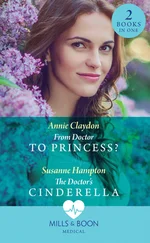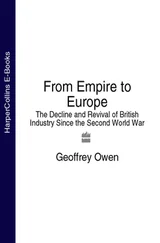The fate of the officers is one of the favorite subjects of Russian propaganda. Even now, Russian TV viewers, if they chance upon a program about the Maidan, are bombarded with images of wounded policemen and streets aflame from Molotov cocktails. In these programs the Berkut epitomizes heroism. They were the ones who attempted to defend Ukraine from the Maidan “fascists.”
Beware, Benderites Are Attacking!
“Which network are you from?” Almost every conversation held on territory that was or is still controlled by the separatists begins with this question. I don’t carry a camera or a microphone, but people are not convinced that I am not from TV. The argument that my journalistic work is based on writing is met with disbelief. In Donbas, as in the majority of Ukrainian regions, sitting in front of the TV is the most important part of each day. It’s the basic entertainment, either after work or on a day off. Cultural trash, sentimental and patriotic movies, the news (which can be described with many words, but “objective” is definitely not one of them), and the cult of Putin—all this can be found in the TV box. Even educated and intelligent people often believe a TV version of events that has very little in common with reality. It’s enough for them to have heard them on TV.
“How can you, Poles, join up with these savage Banderites? After all, they were murdering you in Katyn,” asks Volodymyr in Slovyansk. He has no idea that he is confusing the Volyn massacre with Katyn. Later, I will hear about “the Katyn massacre” a few times.
It is, indeed, the Banderites (originally Ukrainian nationalists named for their leader in the 1930s and 1940s, Stepan Bandera) that the Russian media are warning against. They—the Banderites, fascists, nationalists, and the National Guard—are ready for anything, and above all for oppressing and humiliating the residents of Donbas. Unfortunately, as often happens, somebody has misheard or misunderstood something, and now people take it out on “Benderites” instead of “Banderites.” Ostap Bender, a Soviet archetypal antihero, is a character from the novel The Twelve Chairs by Ilf and Petrov, published in 1928. This “Great Schemer” is a street-smart con man but has very little in common with Ukrainian nationalism.
On the other hand, pro-Russian demonstrators and militants frequently describe themselves as antifascists.
“I hate nationalists and fascists,” a uniformed separatist with a machine gun tells me. A moment later he talks about the blood unity of all Slavs, the greatness of Russian culture and Orthodox religion, but he disparages other faiths. The “people’s governor” Gubarev likes to pose in the imperial uniform.
“You have to write the truth.” This sentence usually follows the question about which TV network I come from. But which truth? Here everybody has his own truth. Once I spent a few hours in a bunker with the separatists. Their unit commander, a retired policeman called “Cimmerian,” is a really polite person. He shows me the photos on his phone: his family, house, work, and so on. Suddenly, one of his subordinates starts telling me about Right Sector—the organization that enjoys an almost mythical status among the separatists.
It is a nationalist coalition created during the Maidan events. Their street clashes with the police in January brought them popularity. But they owe their real fame to the Russian media, which describe them as bloodthirsty beasts. They were mentioned as often as “The One Russia of President Vladimir Putin.” Of all the “Banderites” (or perhaps even “Benderites”) they are the most feared. One militant from Cimmerian’s unit claims that when somebody deserts from the Ukrainian army or the National Guard, men from Right Sector are waiting behind and slash his throat. It’s not a joke. He is quite serious about it and his commander only nods his head.
3. IN NOVOROSSIYA, OR WHERE?
WHEN THE RUSSIAN SPRING began, Russians started pressing for constitutional changes that would “respect the interests of the people in all Ukrainian regions.” It was at that time the term “Southeastern Ukraine” was coined. It comprises eight Ukrainian regions. On the map they look like a croissant, and they are respectively the regions of Kharkiv, Dnipropetrovsk, Luhansk, Donetsk, Zaporozhia, Kherson, Mykolaiv, and Odessa. They were all calling for independence. The Kremlin propaganda began to dub them “Novorossiya” in order to stress that this territory was historically close to Russia and lacked any ties with Ukraine.
The term “Novorossiya” originated in the eighteenth century. On the territory of what is now eight regions of present-day Ukraine (including Crimea, but without the Kharkiv region) the New Russia Governorate (gubernia) was founded. It was part of the Russian Empire. The name Novorossiya was not used since the Bolshevik Revolution until the year 2014.
However, the expansion of the Russian Spring was met with unexpected opposition.
“Novorossiya? But no such thing exists. I haven’t seen their passports,” says Oleksij from Dnipropetrovsk. “Here we support Ukraine,” he adds.
Before the Maidan, the annexation of Crimea, and the pro-Russian demonstrations in Donbas, such opinions were hardly heard. Instead of mobilizing Ukrainian society against the authorities, the Russian Spring only reinforced their sense of being Ukrainian.
Victory Day in Kharkiv
Every year on May 9, on the anniversary of the Third Reich’s surrender, Ukraine celebrates its National Day of Victory and Freedom, commonly known as Victory over Fascism Day. Every year there are grand parades during which in many Ukrainian towns the achievements of Soviet ancestors are remembered.
On May 9, 2014, in Kharkiv the commemorations began at Glory Memorial. Mykhailo Dobkin, at that time a regional governor known for his anti-Ukrainian views, laid flowers there to pay tribute to the veterans of the Great Patriotic War. There were speeches and a parade. At Glory Memorial a crowd of several thousand people were commemorating veterans’ heroic struggles and were not embracing the Russian Spring (as some tried to depict it). Communist flags were not in the majority, and I could see only one that was Russian. The representatives of pro-Russian organizations—the Party of Regions, Borotba, and the Progressive Socialist Party of Ukraine—pushed their way toward the front rows. However, Ukrainian symbols predominated. The soldiers were marching. These were the veterans of the Second World War. Many of them were invalids with tons of medals and some had them hanging from their entire torso. Bystanders were handing them flowers. Although this holiday is celebrated every year, many had tears in their eyes and almost all of them were bursting with pride.
It is only after the official celebrations that several hundred people lined up again in front of the Memorial and unrolled a huge ribbon of Saint George. This is a symbol commemorating Victory Day and is used currently by pro-Russian demonstrators who want to prove that they are fighting fascism like their grandfathers. Every now and then the demonstrators were shouting “I thank Grandpa for victory!” The veterans showed up, too, but it was only a small number from among those who gathered around Glory Memorial during the official festivities. There were about twenty of them. They carried portraits of Stalin and General Zhukov, a brilliant strategist who was widely revered in the Soviet Union.
The march headed toward Freedom Square, one of the largest squares in Europe, to end up at the monument of Lenin, a traditional site of pro-Russian demonstrations. Nobody interfered and there were very few police.
Читать дальше



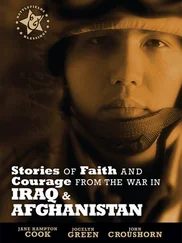
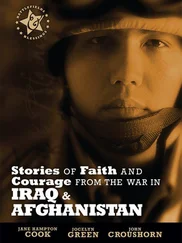


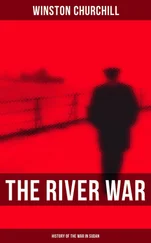
![Theresa Cheung - The Dream Dictionary from A to Z [Revised edition] - The Ultimate A–Z to Interpret the Secrets of Your Dreams](/books/692092/theresa-cheung-the-dream-dictionary-from-a-to-z-r-thumb.webp)

